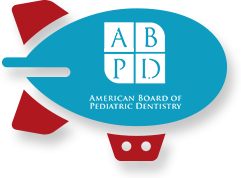Reluctant Brushers? 3 Easy Ways to get Your Kids to Brush Their Teeth
July 26th, 2018
Toothbrushing is not the most fun activity for children but it is absolutely necessary for a healthy life. Here’s how parents can encourage their children to brush by making toothbrushing fun!
1 – Brush Together

One great way to making brushing fun for young brushers is by brushing with them. This helps you get into a fun routine with your child and have a bit more time together, and allows you to give them specific brushing tips, as well as keep an eye on how long they’re brushing.
2 – Find Fun Brushing Videos
For children, it can be tough to brush for two minutes at a time. This is because it’s difficult to keep young children still and focused on brushing their teeth for two minutes. You can help your child have more fun while they brush by letting them brush while watching a tooth brushing video. These educational videos help guide children through brushing their teeth, and each lasts at least two minutes. We suggest finding one that you deem appropriate for your child, and one that they will enjoy watching.
3 – Try an Electric Toothbrush
An electric toothbrush is an appealing option for children just beginning to brush, since they require less dexterity and physical motion to operate. Additionally, most electric toothbrushes feature brushing timers ensures that they brush for two minutes at a time. We suggest looking for an electric toothbrush specifically made for children that is easy for them to hold, and has a head that fits in their mouth comfortably.
Care for Teeth the Right Way
The American Academy of Pediatric Dentistry advises that everyone brushes their teeth twice per day, for two minutes at a time. The time limit helps ensure that all of the bad bacteria is scrubbed off of teeth, which prevents plaque buildup and cavities. Make sure your child brushes their entire tooth surface, including the backside of teeth – which is often neglected.
Brushing isn’t all your child needs to do to maintain a healthy mouth, flossing is also very important. Debris left in between teeth can cause plaque buildup and cavities, which is why it’s important that your child flosses once per day, and cleans below the gumline.
We Help Make Brushing Fun
Our office specializes in caring for children, and helping them understand the importance of oral health. If you have a reluctant toothbrusher, visit our office. We can show your child how fun toothbrushing can be, and how important it is for a healthy life.



